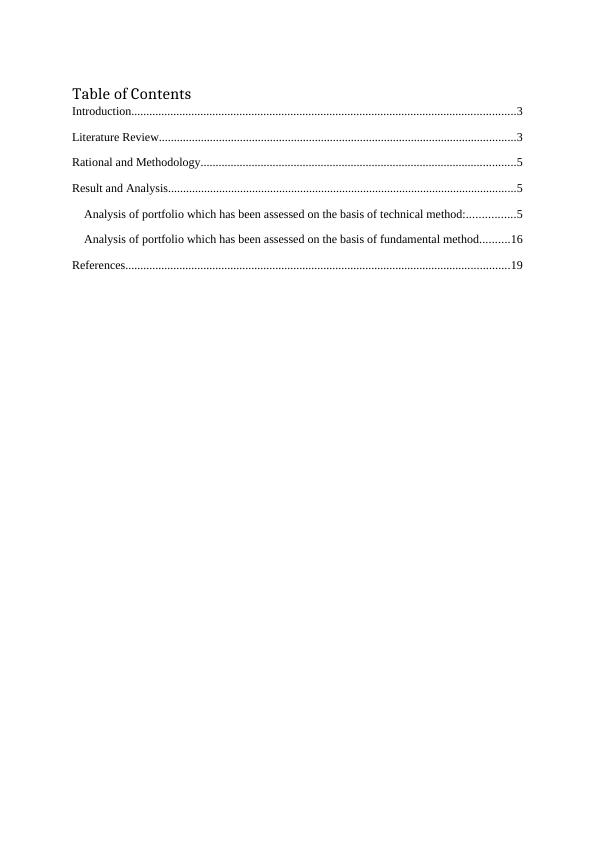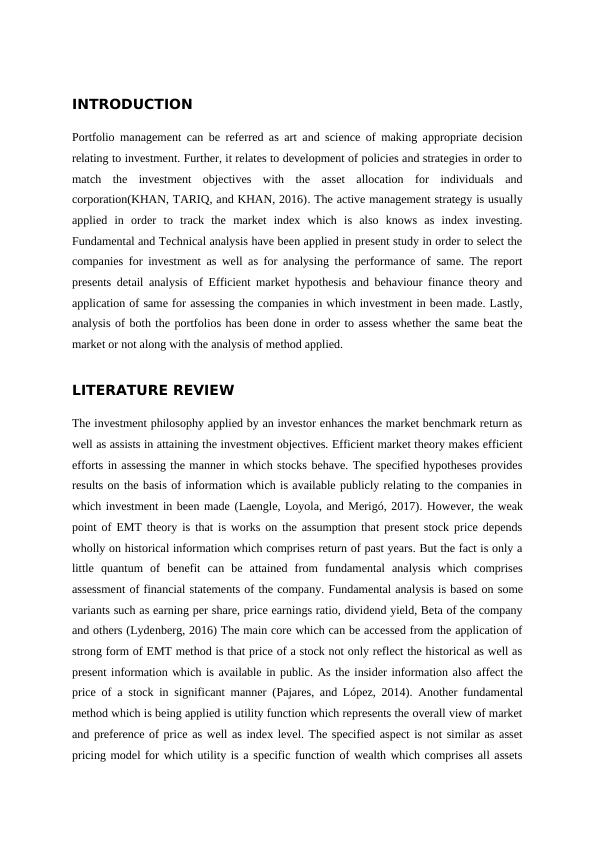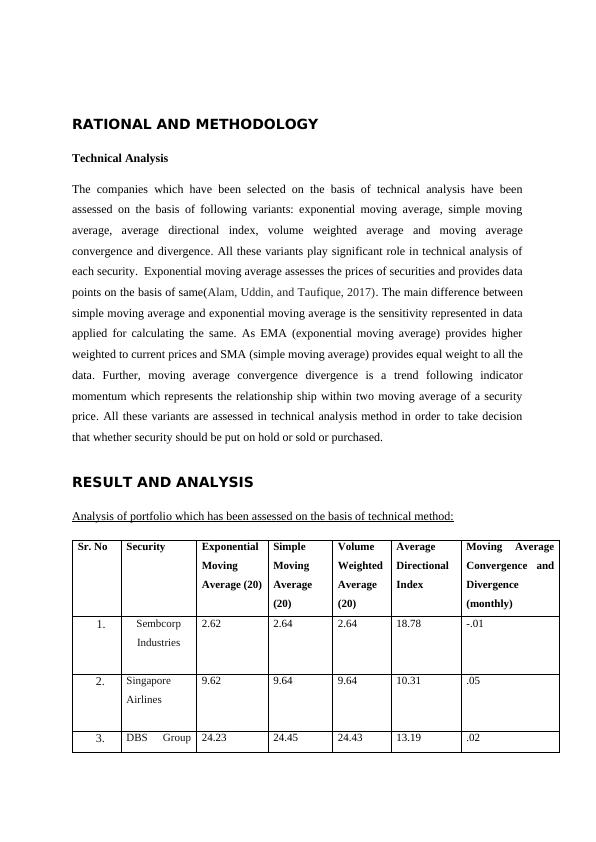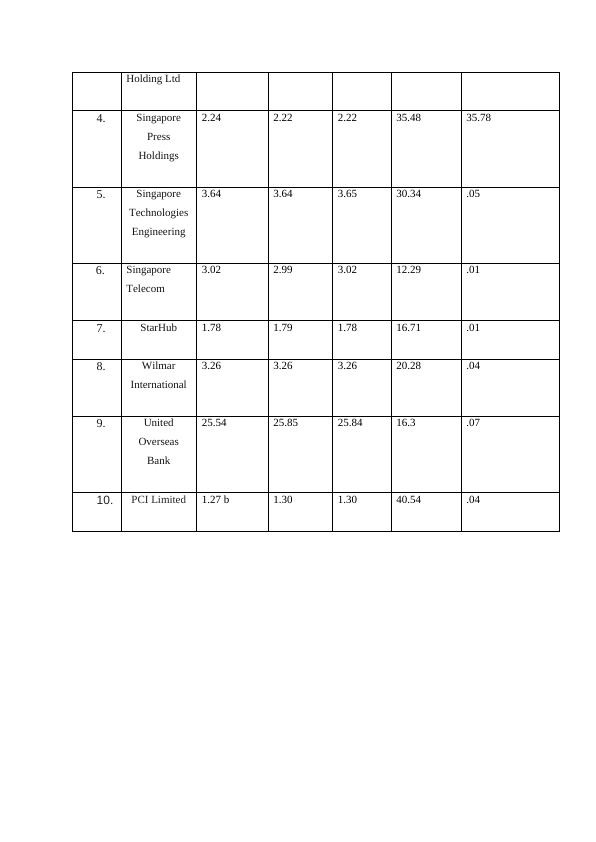Portfolio Management: Analysis of Technical and Fundamental Methods
Compare and contrast two portfolios of shares selected by technical and fundamental analysis, aiming to beat the market. Demonstrate knowledge of the difference between these methods and make explicit reference to EMH in the analysis.
22 Pages3110 Words350 Views
Added on 2023-04-23
About This Document
This report provides an analysis of portfolio management using technical and fundamental methods. It includes a literature review of efficient market hypothesis and behavior finance theory, as well as a methodology for technical analysis. The report also presents the results and analysis of both portfolios, including graphs and tables.
Portfolio Management: Analysis of Technical and Fundamental Methods
Compare and contrast two portfolios of shares selected by technical and fundamental analysis, aiming to beat the market. Demonstrate knowledge of the difference between these methods and make explicit reference to EMH in the analysis.
Added on 2023-04-23
ShareRelated Documents
End of preview
Want to access all the pages? Upload your documents or become a member.
Applied portfolio management Assignment PDF
|6
|1455
|80
FIN602 - Advanced Financial Management - PDF
|34
|7743
|90
Portfolio Construction - Assignment
|9
|1849
|20
Capital Markets and Investment TABLE OF CONTENTS
|22
|3727
|56
FIN602 - Advanced Financial Management || report
|23
|7597
|44
Risk Analysis in Finance
|7
|1750
|50






